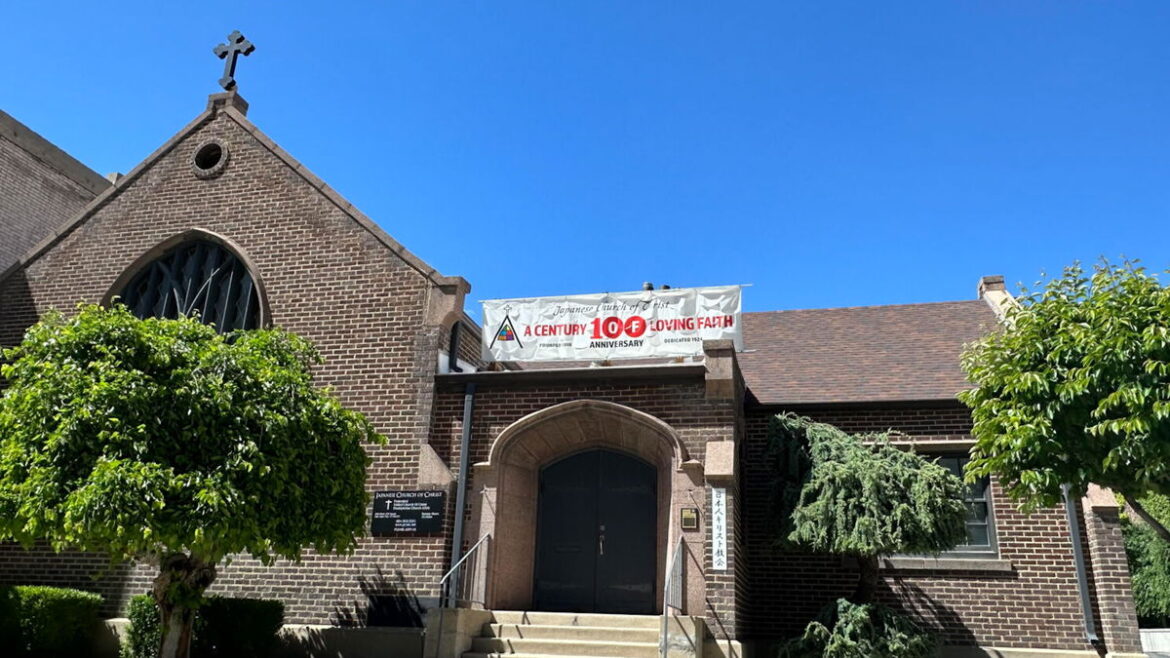Originally Published: 03 NOV 25 19:05 ET
By Joe Wirthlin
Click here for updates on this story
SALT LAKE CITY (KSL, KSL TV) — Leaders from the Japanese Church of Christ unveiled artifacts found in a 101-year-old time capsule on Saturday, showcasing the story of early Japanese immigrants to Salt Lake City.
According to a press release from Michelle Schmitt, the previously unknown time capsule contained three newspapers, Sunday school records, an American and Japanese flag and two small bibles, one of which had been brought to Utah by a Japanese immigrant in 1906.
“Finding the time capsule without any record of its existence feels like a miracle, especially as we celebrate together 100 years of our sacred church building,” Japanese Church of Christ Reverend Andrew Fleishman said. “It’s a blessing to reflect on the Japanese spiritual pioneers who took care and attention to leaving this special gift for today’s generation to find.”
Discovery of the time capsule According to Schmitt, Lorraine Crouse, a trustee of the Japanese Church of Christ and former University of Utah historian, suspected a time capsule may exist, considering the popularity of time capsules at the time of the building’s construction.
Based on Crouse’s hunch, Japanese Church of Christ elder Alan Shino performed a geophysical radar scan of the building, discovering an unknown object hidden in the cornerstone of the church building. Officials then drilled into the interior of the church and discovered a 23 lb. bronze box, which contained the above treasures.
“Removing the box was exciting,” said Japanese Church of Christ elder Lynne Ward. “We were apprehensive about the contents. Was there anything in the box? What could be in the box? Would the contents be intact? We knew that whatever was inside was at risk of damage from simply opening the box. It must be done properly to preserve the artifacts that were hand-selected over one hundred years ago.”
Preserving the artifacts The University of Utah’s Marriott Library Preservation Department offered to assist and safely remove the artifacts from the time capsule in their lab. A small number of congregants from the Japanese Church of Christ were there to witness the event.
The Marriott Library Preservation Department released a report about the capsule itself and the contents found within.
Many of the items were in good condition, although the newspapers and a letter with the names of Sunday school teachers were damaged when workers accidentally pierced the box with drill bits while extracting the capsule.
The Marriot Library Preservation Department repaired the damages to the newspapers, removed creases from the papers and the flag and cleaned the items for easier display to the public.
Fleishman commended Japantown community members for their joint talents and efforts in finding the capsule. A video was shown at the ceremony that summarized the history of the Japanese Church of Christ, the time capsule’s discovery, each artifact within the capsule and their individualized care.
A diverse group of religious leaders attended the unveiling ceremony, along with hundreds of other guests. Religions represented included the Presbyterian Church USA, Church of Jesus Christ of Latter-day Saints, Cathedral of the Madeleine, United Church of Christ, Salt Lake Buddhist Temple, Tongan-American Free-Weslyan Church, Kachin Trinity Church, and the Salt Lake Interfaith Roundtable.
Japantown’s place in Salt Lake City Fleishman said the important historical finding came during a time of lively debate surroundingJapantown and its place in the future of Salt Lake City. According to the press release, generational changes are being made to the downtown landscape to prepare for the upcoming Salt Lake Olympics.
According to the release, Salt Lake City’s Japantown was settled in 1900, with the Japanese Church of Christ and the Salt Lake Buddhist Temple operating as Japantown’s core. A Japanese garden is maintained by the Salt Palace ground crews, which provides urban green space and is home to a plaque honoring WWII Japanese American soldiers.
Japantown was bounded by South Temple, State Street, Third South and Seventh West. Japanese-owned restaurants, markets, service stations, hotels, professional offices, boarding houses and dry cleaners were all located within Japantown, though the expansion of the Salt Palace Convention Center in the 1990s reduced the original buildings.
Japantown continues to serve Japanese religion and culture, with the two churches hosting the Nihon Matsuri and Obon festivals and sponsoring community activities.
This story was provided to CNN Wire by an affiliate partner and does not contain original CNN reporting.
Please note: This content carries a strict local market embargo. If you share the same market as the contributor of this article, you may not use it on any platform.
The-CNN-Wire
™ & © 2025 Cable News Network, Inc., a Warner Bros. Discovery Company. All rights reserved.


AloJapan.com